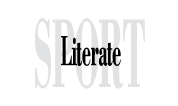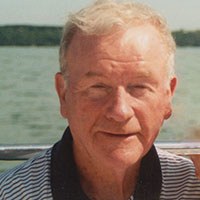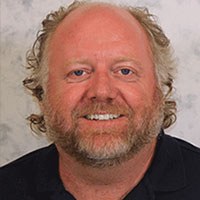Baseball and Tech: A Lost Frontier?
https://sportliterate.org/wp-content/themes/osmosis/images/empty/thumbnail.jpg 150 150 bjj-sportliterate bjj-sportliterate https://secure.gravatar.com/avatar/592f60292ffae558017e7047d039bebe88be7eca3a999965f3a7f0501ad82d49?s=96&d=mm&r=gBaseball and Tech: A Lost Frontier?
by Ken Hogarty
America’s frontier experience succumbed to technological advances which initially expanded its horizons. Unsurprisingly, because baseball links American life to the frontier romance it keeps alive, it too finds itself threatened by technology once promising boundless opportunity.
Agricultural technology, epitomized by the spread of barbed wire, commandeered the need for cattle drives. Innovative firearms, such as the Colt revolver, enabled settlers to tame nature and Native Americans in their path. Mobility and communication too — technologically manifest in stagecoaches, the railroad, and telegraph — made Western expansion viable, hastening the frontier’s demise.
Baseball, birthed in a frontier experience, evolved into America’s national pastime because of the telegraph and railroad. Though other sports, especially football, found a better marriage with technology, the telegraph bequeathed radio and television, and rail travel bequeathed air travel to usher in baseball’s Golden Age.
Baseball reenacted the epic life of the West — a shifting concept throughout America’s expansion — and provided what Henry James called a “continuity of things.” Hawthorne’s New England Puritans, Melville’s whalers, Twain’s Mississippi raftsmen, and Faulkner’s Yoknapatawpha County denizens fictionalized particularized myths embodying essentials about the frontier experience.
Baseball does so through a democratic, national drama, at once realistic, romantic, and accessible. Donald Hall claimed, “Baseball is a place where memory gathers.” The memory of the revelatory frontier myth it perpetuates makes abstractions in the American experience concrete.
Modern technology, robbing us of reflection and anticipation essential to play and watch baseball, points it toward a trajectory mirroring the fate of the Western experience it kept alive. Jacques Barzun said, “Whoever wants to know the heart and mind of America had better learn baseball.” Is that true today?
Baseball emerged as the national game when the frontier became myth or morality tale, the staple of dime novels and romantic narratives. The Growth of the American Republic asserted, “The cowboys and their liege lords developed a unique culture, folklore and society, and then passed away forever.” Baseball, however, evolved to perpetuate Western characteristics and values, most significantly defining heroes as rugged individualists acting for communal good.
Baseball’s setting, objective, play, rhythm, characters, and history reveal its cultural derivation connecting Americans to a frontier past, real and romanticized, that molded national character.
Ballparks’ traditional sights, sounds, and smells conjure what Eric Solomon called “pastoral familiarity,” in opposition to urban reality. Thomas Wolfe noted wooden bats, leather balls and gloves, and an expanse of grass spoke to a shared experience with the land.
Not always a pastoral idyll, the West became backdrop for dangerous clashes with hostile forces. American character sustained such opposition through acceptance of diversity and endurance of underlying tension, hallmarks of baseball.
Contradictions in the game’s layout also emphasize opposition. The outfield — a sparsely populated wilderness — contrasts with the inner diamond — compact, regularized, and densely populated — where the community’s main business unfolds. This fulcrum of action, with rigid dimensions, sits in a corner of the playing surface. Like Western settlements, land spreads from it to a remote frontier.
Idiosyncratic outfield diameters and shapes flout restrictions, just as varying Western locales bred peculiarities while promulgating common habits and values. In baseball, diverse venues dictate specific action, though within a general pattern.
Frontier success meant territorial possession. In baseball, action emerges from the duel to control a nebulous territory, the strike zone. What reenactment replicates the scenario of high noon duels better than baseball’s hitter/pitcher confrontation? Mark Kram noted that territory, at the core of many games, is never so maddingly understated as in the “gamesmanship of this conflict.” In the West, duelists also fought over psychic as well as physical territory.
Geoffrey C. Ward said “at the heart of the game lie mythic contradictions [and] tensions. It is about time and timelessness, speed and grace, failure and loss, imperishable hope — and coming home.” So too, the frontier experience.
Frontiersmen pursued dreams, new homes, and better lives as productive adults. A batter too starts at home but seeks a different home, rewarded for his mobility. Blair Fuller emphasized this significance: “[Returning home when scoring a run] is the second, creative home of man, the home that he establishes for himself. This is the story Americans love best, . . . our preoccupation due to the pioneer experience.” Despite Thomas Wolfe’s assertion “you can’t go home again,” batters aim to do so.
The aggressor suddenly becomes the defender or vice versa in baseball. Players change sides every half inning. After facing the other team alone when batting, players work with teammates on defense, though the designated hitter rule subverts this to an extent.
Western expansion surged as pioneers followed trailblazers, akin to baseball’s lead-off men. Thus, Western experience featured a rhythm of stops and starts. Though today’s sluggers strive to launch homers to return home immediately, teams historically advanced runners in stops and starts. Roger Kahn wrote, “Baseball’s inherent rhythm, minutes and minutes of passivity erupting into seconds of frenzied action, matches an attribute of the American character.” Traditional baseball reenacts the rhythm of frontier expansion.
Action in baseball, not clock-driven, often takes place in the imagination. Conversely, time, for us speeded-up in a complex society, manifested itself on the frontier in a lazy, seasonal rhythm, romanticized in a cattle-drive. In baseball, a game theoretically could, before recent rule implementations, last forever.
Baseball also replicates the seasonal Western notion of time. During spring training, players band together like hopeful wagon train settlers. The dog days of summer test ballplayers, just as long drives did cowboys. Baseball’s winter “hot-stove season,” rebirthing expectations, calls to mind frontiersmen hunkered down in log cabins. The mandated offseason inaction of both promotes storytelling and tall tales.
Baseball players, like cowboy-heroes, enjoy instant resolution and gain accomplishment based on action. Players get rewarded or dinged statistically, not only in comparison with peers, but also predecessors, legendary and mythic. When no longer productive, they get sent packing like non-producing cowboys.
The cowboy-hero, defined by skills and adaptability, belonged to a male cult with its unwritten code of honor. Baseball heroes similarly cite an unwritten code to condone beanballs, hard slides, and charging the mound. The frontier’s pragmatic, violent nature, even muted by civilizing society’s encroachment, perpetuated a survival-of-the-fittest ethos. Beneath a surface gentility, baseball ritualizes pragmatic actions, bent rules, and violent reactions. The batter charging the mound followed by his posse epitomizes vigilante justice.
Historically, frontiersmen argued with power. Baseball extended a similar democratic resistance to authority. Bruce Catton observed, “One of the stock tableaux in American sports history is the aggrieved baseball player jawing with the umpire.” The rugged individualist sees himself as the ultimate authority, and fans often follow in concert. “Kill the Ump” echoed in stadiums when umpires had the last word before instant replay.
Merritt Clifton noted that baseball has always appealed to immigrants, in part because many came to America in rebellion against authority: “They could identify with the ambitious batsman/gunslinger who takes ’em all on. And, as they gradually gained property and responsibilities, they could identify with the home-team defense, too, . . . [not wanting] to be outcasts forever.”
People who play, watch and manipulate baseball mirror stock Western characters. Baseball phenoms replicate gunslingers, while managers playing hunches are “riverboat gamblers.” Pitchers taunting batters with off-speed stuff, or fielders “in the neighborhood” on tags, act like Western con-men.
Effete Easterners morphed into early baseball’s few college-educated players. Recently, they become Sabermetrics adherents, taking over front offices. Conversely, old-school managers and coaches perpetuate caricatures of crusty Western characters.
As in any romance, stories of the Old West defined villains as totally evil. They wore black to contrast with the “good guys.” Reaffirming this, baseball traditionally garbed home teams in white and visitors in grey.
Opponents using corked bats or pitchers throwing spitballs typify outlaws. Western saloon keepers become baseball clubhouse overseers. Ranchers? Farm system development personnel or the groundskeepers? Batboys serve like youngsters fawning over Western heroes. The umpire, the sheriff/deputy/marshal of baseball, upholds the law with his crew, his posse. Drifters in the West become multi-traded MLB veterans, deadline signees to win a pennant. And the Hatfields and McCoys had nothing on the Red Sox/Yankees and Giants/Dodgers, baseball’s feuding families.
Baseball even had its own hanging judge, the Commissioner, made legendary in the person of Judge Kenesaw Mountain Landis who rode to the rescue after the Black Sox scandal, but also blocked integration.
Novelists and poets, like the Zane Greys who commemorated the West, celebrate baseball. A plethora of storytellers, from writers to announcers and colorful characters within the game. emulate Western myth-making tradition. Vin Scully, waxing poetic, might have been telling tales around a campfire. Moreover, dime novels that kept the West alive morphed into sports stories, with baseball heroes such as Frank Merriwell, Chip Hilton, and the aptly named Bronc Burnett. Baseball, like the West, invites narrative, poetic Homers.
Roger Kahn noted, “There is action for perhaps fifteen minutes of the time [in baseball]. The rest is either inaction or suspense, depending on imagination and point-of-view.” The pauses invite personal interaction, paralleling porch gatherings in Western communities, with other fans, in the stands or in front of a TV, more than other sports. Baseball exchanges can also echo Western one-upmanship within a saloon camaraderie, mimicked in contemporary sports talk shows.
Just as baseball attracts many female fans, numerous unchronicled women civilized the West. Often emerging as hero-worshipping groupies in baseball or frontier romances (Bull Durham’s Annie, The Natural’s Memo Paris, or Miss Kitty from “Gunsmoke”), women have historically been relegated to “a league of their own,” until recent progress on and off the field.
Baseball’s owner/manipulators, motivated by money, power, or promises of legitimacy, simultaneously act as competitors and partners. The blatant anti-monopoly status ceded in 1922 to baseball’s owners granted them a similar status as Western cattle, land, and railroad barons.
The 50 years after baseball obtained its Anti-Trust Exemption found the sport replicating the country’s earlier push to new frontiers during “Baseball’s Golden Age.” Regardless, owners held players as property “on the hoof.” Curt Flood’s 1972 Supreme Court challenge paved the way for player salary arbitration and free agency, analogous among owners to the worst cattle stampede.
History justifiably acclaims baseball’s role integrating American society. Jackie Robinson breaking baseball’s color barrier tells a quintessential American story. Still, baseball outlawed players of “Black African descent” from the high minors and major leagues from 1887 for 60 years. In the interim, some players ironically “passed as Indian.” Many historians consider subjugation of Native Americans on the frontier genocide. The exclusion of African Americans in baseball similarly exterminated hope for oppressed people.
The game’s manipulators historically include gamblers, administrators, businessmen, advertisers, agents, media honchos, politicians. Similar character types, personified by Eastern speculators, contributed to the ruination of the frontier, even while paving the way for the emerging civilization. On both the frontier and in baseball, profiteers often have used technology to gain advantage.
Train travel and radio spread the sport’s hold before yielding to air travel and television as baseball cultivated national audiences. Television, squelching the expanse of the game and stressing big-event viewing rather than seasonal narrative, most augurs a fall. The building of modern stadiums, the uniform stitching of baseballs, the crafting of bats, and recent innovations such as instant replay and analytics promised innovation. But, at what price? Recent technology has also birthed burgeoning gambling, gaming, and fantasy sports industries that promote entrée to a new demographic, but a demographic completely adrift from the frontier experience baseball recreates.
Baseball players, like Westerners, pragmatically seek an edge. Baseball’s most recent cheating scandal, however, crossed a line BECAUSE it, even with drumbeating garbage cans, was technologically driven. Baseball has reacted by implementing changes that, sadly, often bury its frontier roots.
In the movie Bang the Drum Slowly, the appropriately named Piney Woods sang about a dying teammate. Woods lamented, “I’m just a young cowboy, and know I done wrong.” Baseball can’t get its reaction to its recent scandals wrong by looking toward tech solutions that bury the lost frontier it so long reanimated.
Ken Hogarty recently retired as a high school English teacher and principal. Since, he’s had two short stories, three news features, a memoir and over 20 satires and comedy pieces published. He lives in the East Bay with wife Sally. He’s attended World Series games every year (starting with Game 6 in 1962) his San Francisco Giants have participated in and loved, after waiting 56 years to attend himself, dismissing 1,300 students early for the 2010 victory parade. The connection between baseball and the frontier experience germinated as part of the introduction to his MA English thesis, “The Metaphor of Baseball.”







